An Image-Aided Sparse Point Cloud Registration Strategy for Managing Stockpiles in Dome Storage Facilities
Abstract
1. Introduction
2. SMART System and Datasets Description
2.1. SMART System Description
2.2. SMART System Operation
2.3. Datasets Description
3. Methodology
3.1. Coarse Registration of LiDAR Scans
3.2. Partial Fine Registration
3.2.1. Roof Extraction
3.2.2. LSA Using Roof Feature
- is the coordinates of point I with respect to the LiDAR unit coordinate system at the scan;
- , are the mounting parameters (lever arm and boresight rotation matrix) for the LiDAR unit relative to the pole coordinate system;
- , are the translation vector and rotation matrix of the pole coordinate system at the scan relative to the mapping frame.
3.3. Full Fine Registration
3.3.1. Extraction and Matching of Roof Stringers
3.3.2. Extraction and Matching of Planar Features
3.3.3. LSA Using Roof, Stringer, and Wall/Ground Features
- is the coordinates of an edge point in the stringer-specific coordinate system ();
- is the rotation matrix around the axis, defined by to transform into ;
- is the coordinates of the roof apex in the mapping frame ();
- is the coordinates of an edge point in the mapping coordinate system (); refer to Equation (1) in Section 3.2.2.
4. Experimental Results
4.1. Partial Fine Registration
4.2. Full Fine Registration
4.2.1. Lebanon Dataset
4.2.2. Frankfort Dataset
4.2.3. West Lafayette Dataset
5. Conclusions and Recommendations for Future Work
- Two new geometric primitives (roof and stringers in dome facilities) are investigated as potential features for the registration of collected scans inside dome facilities;
- A semi-automated approach has been developed for the extraction of roof and stringer features;
- A reliable neighborhood definition approach is developed for extracting planar features from point clouds exhibiting significant variation in point density;
- A general registration framework for processing collected LiDAR data by the SMART system within dome facilities is proposed, while providing the flexibility of including different feature primitives (e.g., roof, stringers, ground, and walls);
- The feasibility of the proposed framework is illustrated using real datasets acquired in three dome facilities.
Author Contributions
Funding
Institutional Review Board Statement
Informed Consent Statement
Data Availability Statement
Conflicts of Interest
References
- FHWA Road Weather Management Program. Available online: https://ops.fhwa.dot.gov/weather/weather_events/snow_ice.htm (accessed on 31 October 2022).
- He, H.; Chen, T.; Zeng, H.; Huang, S. Ground control point-free unmanned aerial vehicle-based photogrammetry for volume estimation of stockpiles carried on barges. Sensors 2019, 19, 3534. [Google Scholar] [CrossRef] [PubMed]
- Mora, O.E.; Chen, J.; Stoiber, P.; Koppanyi, Z.; Pluta, D.; Josenhans, R.; Okubo, M. Accuracy of stockpile estimates using low-cost sUAS photogrammetry. Int. J. Remote Sens. 2020, 41, 4512–4529. [Google Scholar] [CrossRef]
- Hugenholtz, C.H.; Walker, J.; Brown, O.; Myshak, S. Earthwork volumetrics with an unmanned aerial vehicle and softcopy photogrammetry. J. Surv. Eng. 2015, 141, 06014003. [Google Scholar] [CrossRef]
- Pratomo, D.G.; Anjasmara, I.M.; Ahmad, F. Analysis of the volume comparation of 3′S (TS, GNSS and TLS). E3S Web Conf. 2019, 94, 01014. [Google Scholar]
- Zhu, J.; Yang, J.; Fan, J.; Ai, D.; Jiang, Y.; Song, H.; Wang, Y. Accurate measurement of granary stockpile volume based on fast registration of multi-station scans. Remote Sens. Lett. 2018, 9, 569–577. [Google Scholar] [CrossRef]
- Alsayed, A.; Yunusa-Kaltungo, A.; Quinn, M.K.; Arvin, F.; Nabawy, M.R. Drone-assisted confined space inspection and stockpile volume estimation. Remote Sens. 2021, 13, 3356. [Google Scholar] [CrossRef]
- Schonberger, J.L.; Frahm, J.-M. Structure-from-motion revisited. In Proceedings of the 2016 IEEE Conference on Computer Vision and Pattern Recognition (CVPR), Las Vegas, NV, USA, 27–30 June 2016. [Google Scholar]
- Gago, R.M.; Pereira, M.Y.; Pereira, G.A. An aerial robotic system for inventory of stockpile warehouses. Eng. Rep. 2021, 3, e12396. [Google Scholar] [CrossRef]
- Voordendag, A.B.; Goger, B.; Klug, C.; Prinz, R.; Rutzinger, M.; Kaser, G. Automated and permanent long-range terrestrial laser scanning in a high mountain environment: Setup and first results. ISPRS Ann. Photogramm. Remote Sens. Spat. Inf. Sci. 2021, 2, 153–160. [Google Scholar] [CrossRef]
- Manish, R.; Hasheminasab, S.M.; Liu, J.; Koshan, Y.; Mahlberg, J.A.; Lin, Y.-C.; Ravi, R.; Zhou, T.; McGuffey, J.; Wells, T. Image-Aided LiDAR Mapping Platform and Data Processing Strategy for Stockpile Volume Estimation. Remote Sens. 2022, 14, 231. [Google Scholar] [CrossRef]
- Mahlberg, J.A.; Manish, R.; Koshan, Y.; Joseph, M.; Liu, J.; Wells, T.; McGuffey, J.; Habib, A.; Bullock, D.M. Salt Stockpile Inventory Management Using LiDAR Volumetric Measurements. Remote Sens. 2022, 14, 4802. [Google Scholar] [CrossRef]
- Besl, P.; McKay, N. Method for Registration of 3-D Shapes. Sensor Fusion IV: Control Paradigms and Data Structures; SPIE: Bellingham, WA, USA, 1992; Volume 1611. [Google Scholar]
- Chen, Y.; Medioni, G. Object modelling by registration of multiple range images. Image Vis. Comput. 1992, 10, 145–155. [Google Scholar] [CrossRef]
- Sharp, G.C.; Lee, S.W.; Wehe, D.K. ICP registration using invariant features. IEEE Trans. Pattern Anal. Mach. Intell. 2002, 24, 90–102. [Google Scholar] [CrossRef]
- Gressin, A.; Mallet, C.; Demantké, J.; David, N. Towards 3D lidar point cloud registration improvement using optimal neighborhood knowledge. ISPRS J. Photogramm. Remote Sens. 2013, 79, 240–251. [Google Scholar] [CrossRef]
- Al-Durgham, M.; Detchev, I.; Habib, A. Analysis of two triangle-based multi-surface registration algorithms of irregular point clouds. Int. Arch. Photogramm. Remote Sens. Spat. Inform. Sci 2011, XXXVIII-5/W12, 61–66. [Google Scholar] [CrossRef]
- Cardani, G.; Angjeliu, G. Integrated use of measurements for the structural diagnosis in historical vaulted buildings. Sensors 2020, 20, 4290. [Google Scholar] [CrossRef]
- Glira, P.; Pfeifer, N.; Briese, C.; Ressl, C. A correspondence framework for ALS strip adjustments based on variants of the ICP algorithm. Photogramm.-Fernerkund. -Geoinf. 2015, 4, 275–289. [Google Scholar] [CrossRef]
- Kim, P.; Chen, J.; Cho, Y.K. Automated point cloud registration using visual and planar features for construction environments. J. Comput. Civ. Eng. 2018, 32, 04017076. [Google Scholar] [CrossRef]
- Huang, T.; Zhang, D.; Li, G.; Jiang, M. Registration method for terrestrial LiDAR point clouds using geometric features. Opt. Eng. 2012, 51, 021114. [Google Scholar] [CrossRef]
- Fangning, H.; Ayman, H. A closed-form solution for coarse registration of point clouds using linear features. J. Surv. Eng. 2016, 142, 04016006. [Google Scholar] [CrossRef]
- Akca, D. Full automatic registration of laser scanner point clouds. ETH Zur. 2003. [CrossRef]
- Franaszek, M.; Cheok, G.S.; Witzgall, C. Fast automatic registration of range images from 3D imaging systems using sphere targets. Autom. Constr. 2009, 18, 265–274. [Google Scholar] [CrossRef]
- Bosché, F. Plane-based registration of construction laser scans with 3D/4D building models. Adv. Eng. Inform. 2012, 26, 90–102. [Google Scholar] [CrossRef]
- Liu, W.I. Novel method for sphere target detection and center estimation from mobile terrestrial laser scanner data. Measurement 2019, 137, 617–623. [Google Scholar] [CrossRef]
- Lin, Y.C.; Liu, J.; Cheng, Y.T.; Hasheminasab, S.M.; Wells, T.; Bullock, D.; Habib, A. Processing Strategy and Comparative Performance of Different Mobile LiDAR System Grades for Bridge Monitoring: A Case Study. Sensors 2021, 21, 7550. [Google Scholar] [CrossRef] [PubMed]
- Wang, Y.-T.; Peng, C.-C.; Ravankar, A.; Ravankar, A. A single LiDAR-based feature fusion indoor localization algorithm. Sensors 2018, 18, 1294. [Google Scholar] [CrossRef]
- Han, J.Y.; Jaw, J.J. Solving a similarity transformation between two reference frames using hybrid geometric control features. J. Chin. Inst. Eng. Trans. Chin. Inst. Eng. A 2013, 36, 304–313. [Google Scholar] [CrossRef]
- Han, J.Y. A noniterative approach for the quick alignment of multistation unregistered LiDAR point clouds. IEEE Geosci. Remote Sens. Lett. 2010, 74, 727–730. [Google Scholar] [CrossRef]
- Li, J.; Yang, B.; Chen, C.; Habib, A. NRLI-UAV: Non-rigid registration of sequential raw laser scans and images for low-cost UAV LiDAR point cloud quality improvement. ISPRS J. Photogramm. Remote Sens. 2019, 158, 123–145. [Google Scholar] [CrossRef]
- Habib, A.; Lin, Y.J. Multi-class simultaneous adaptive segmentation and quality control of point cloud data. Remote Sens. 2016, 8, 104. [Google Scholar] [CrossRef]
- Jegou, H.; Douze, M.; Schmid, C. Product quantization for nearest neighbor search. IEEE Trans. Pattern Anal. Mach. Intell. 2010, 33, 117–128. [Google Scholar] [CrossRef]
- Illingworth, J.; Kittler, J. A survey of the Hough transform. Comput. Vis. Graph. Image Process. 1988, 44, 87–116. [Google Scholar] [CrossRef]
- Abdi, H.; Williams, L.J. Principal component analysis. Wiley Interdiscip. Rev. Comput. Stat. 2010, 2, 433–459. [Google Scholar] [CrossRef]
- Habib, A.; Lay, J.; Wong, C. Specifications for the quality assurance and quality control of lidar systems. Submitt. Base Mapp. Geomat. Serv. Br. Columbia 2006. Available online: https://engineering.purdue.edu/CE/Academics/Groups/Geomatics/DPRG/files/LIDARErrorPropagation.zip (accessed on 31 October 2022).

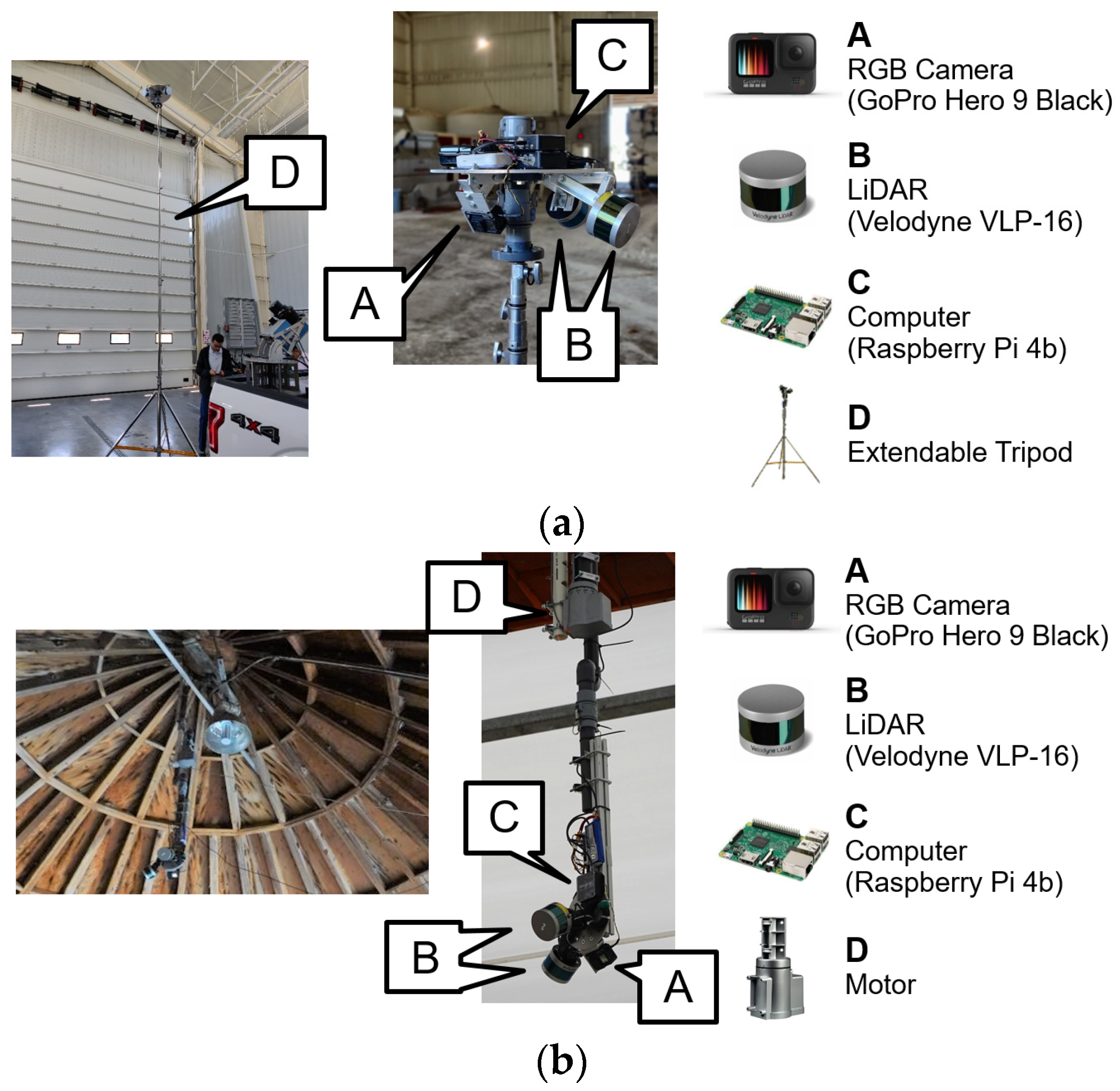
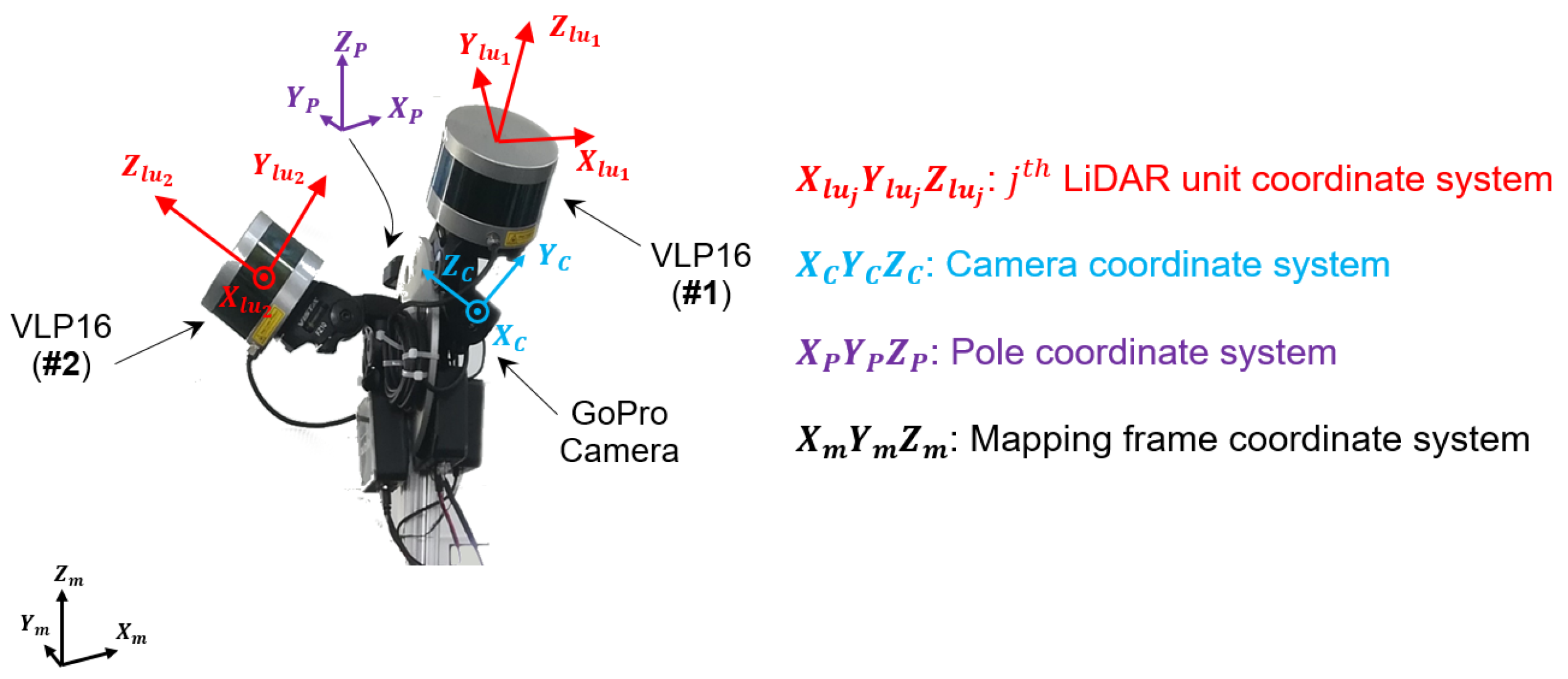
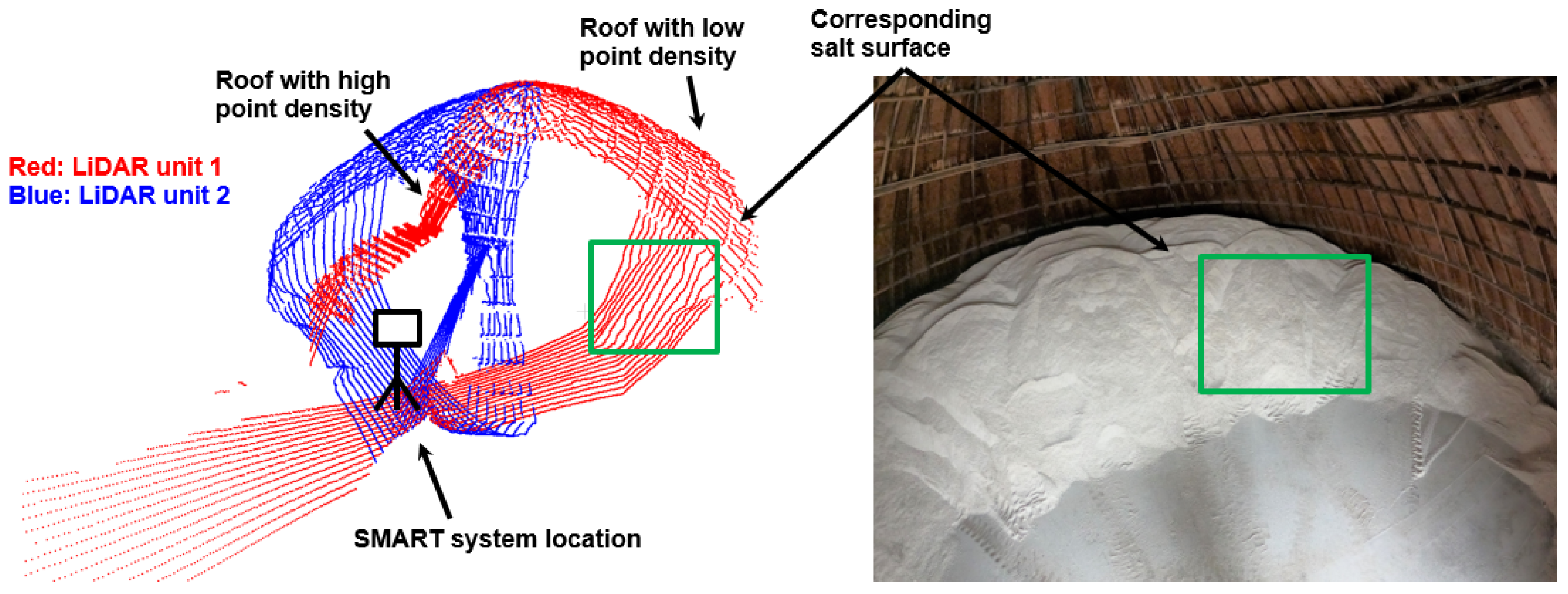

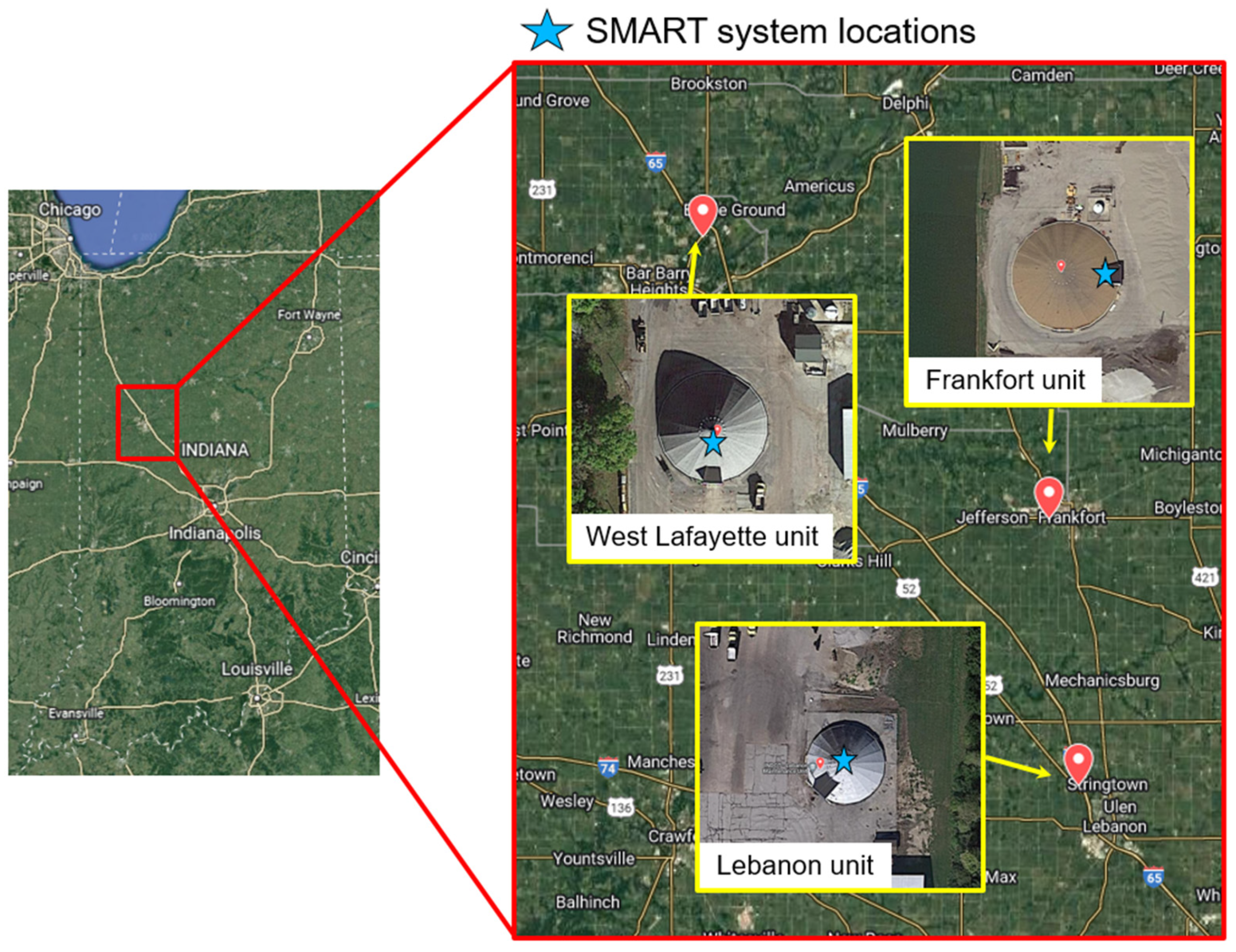

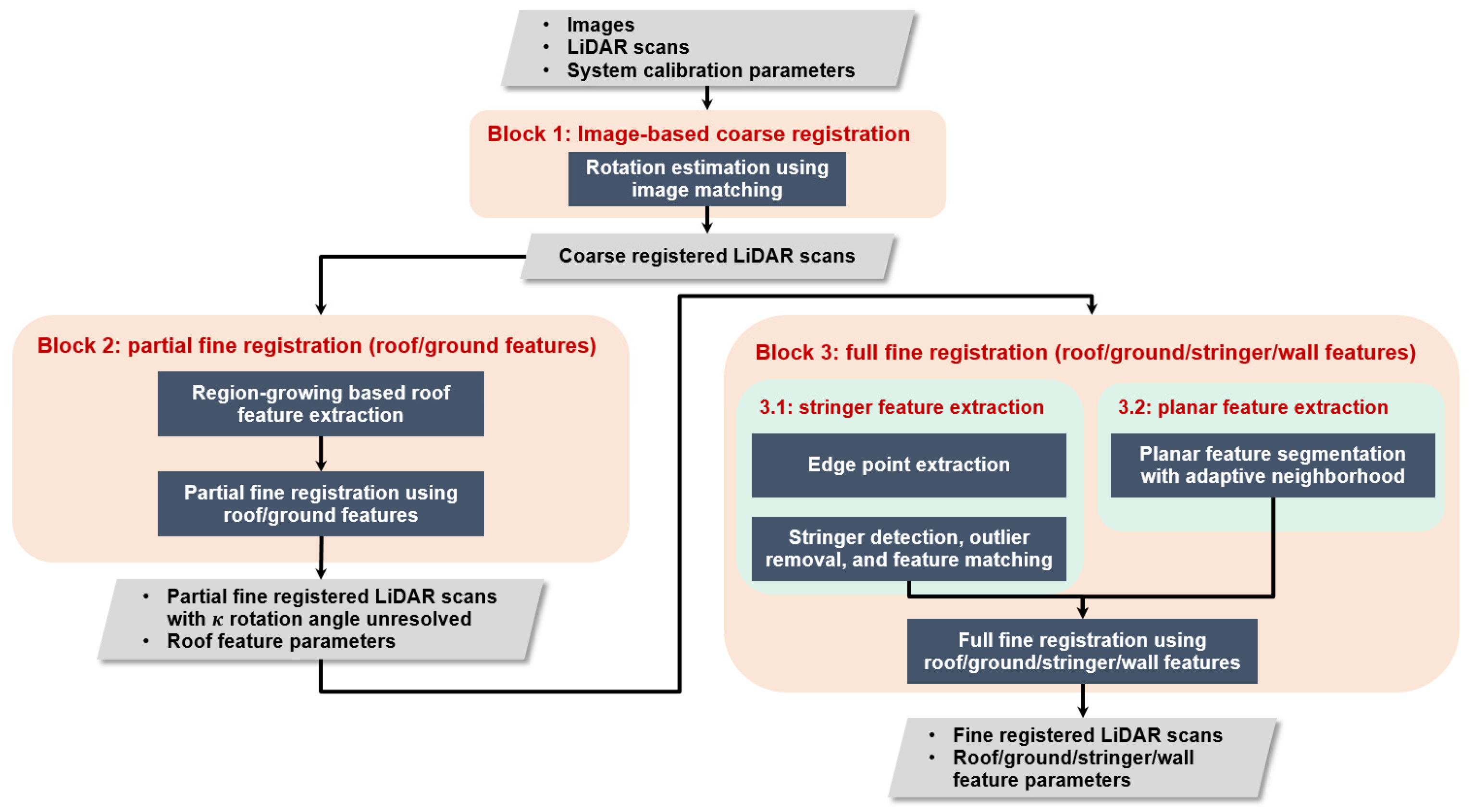
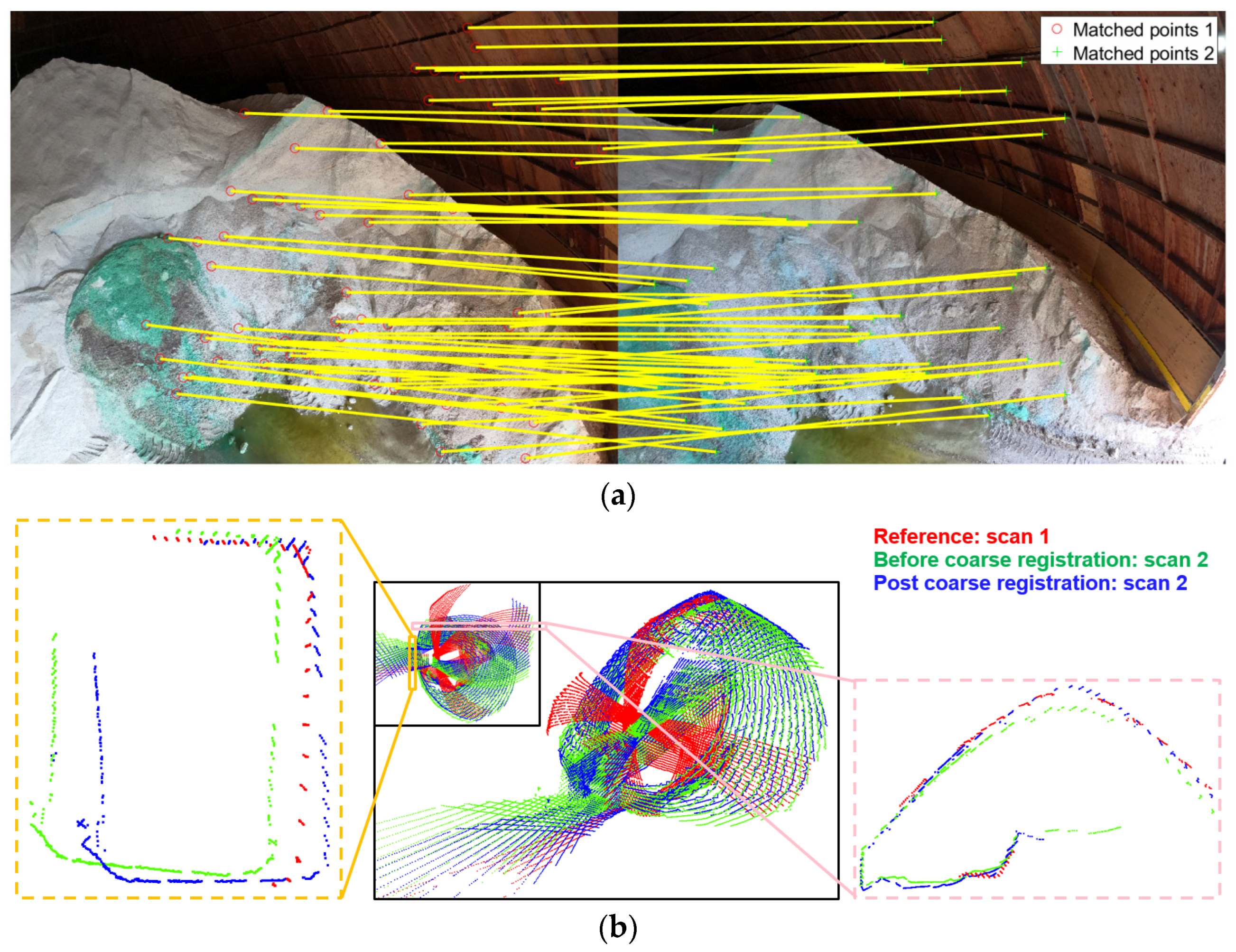

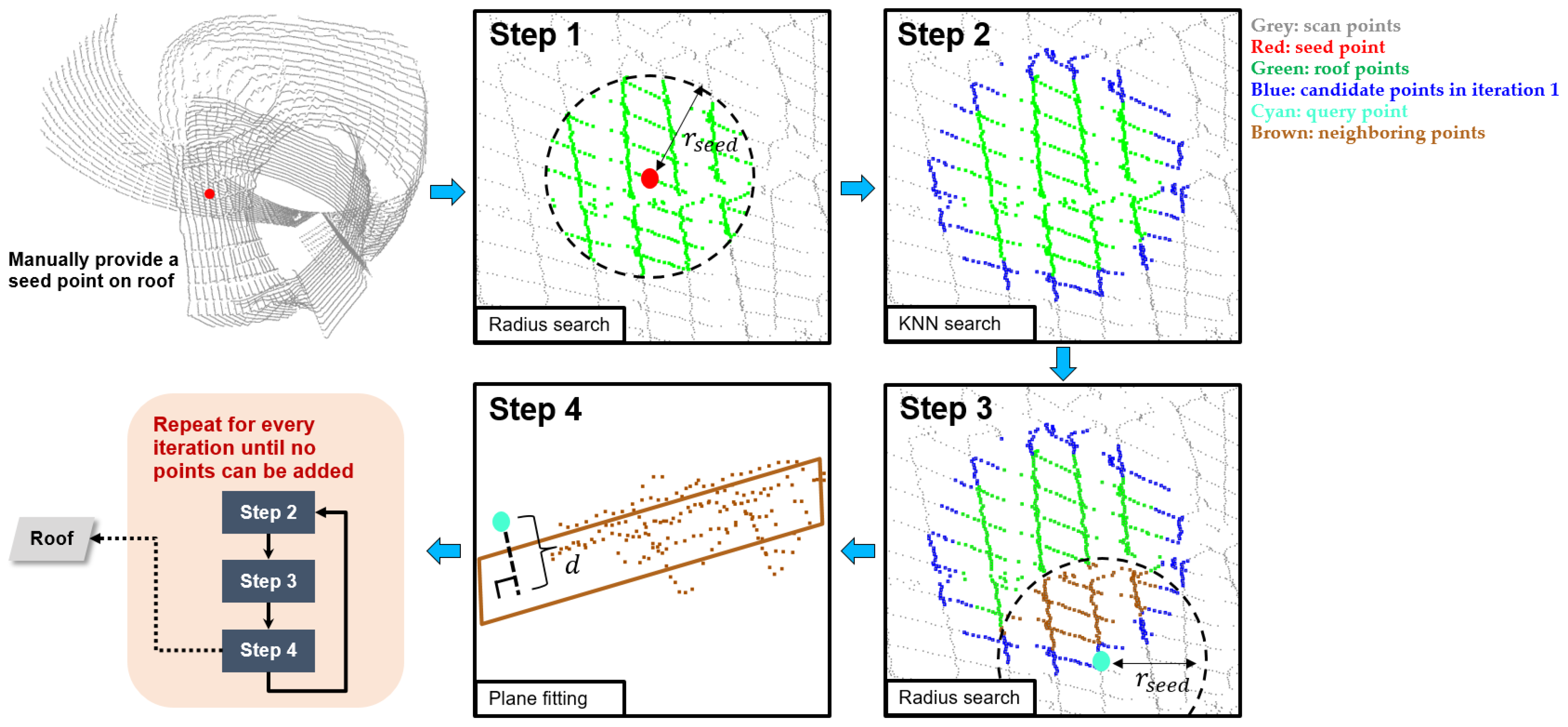
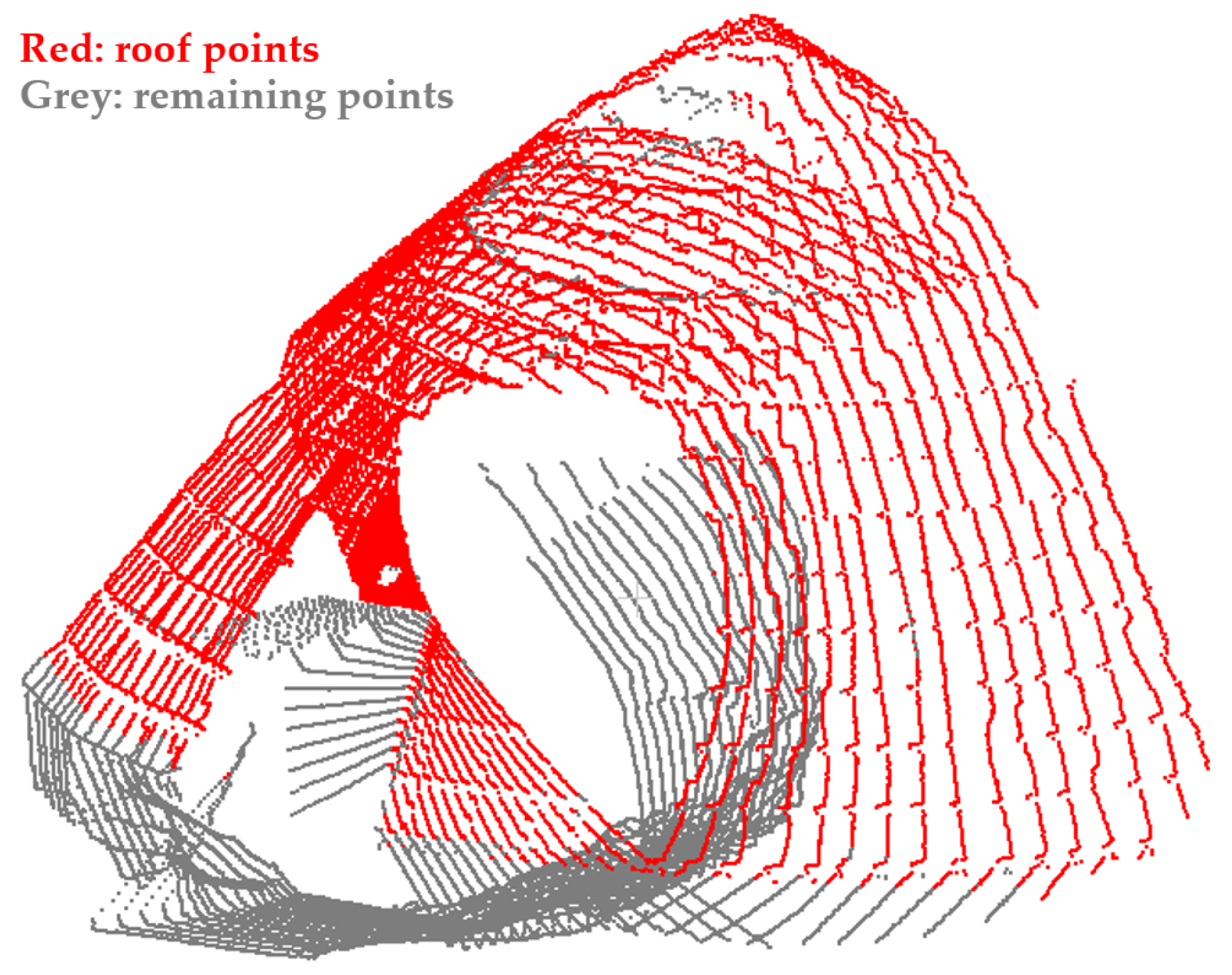
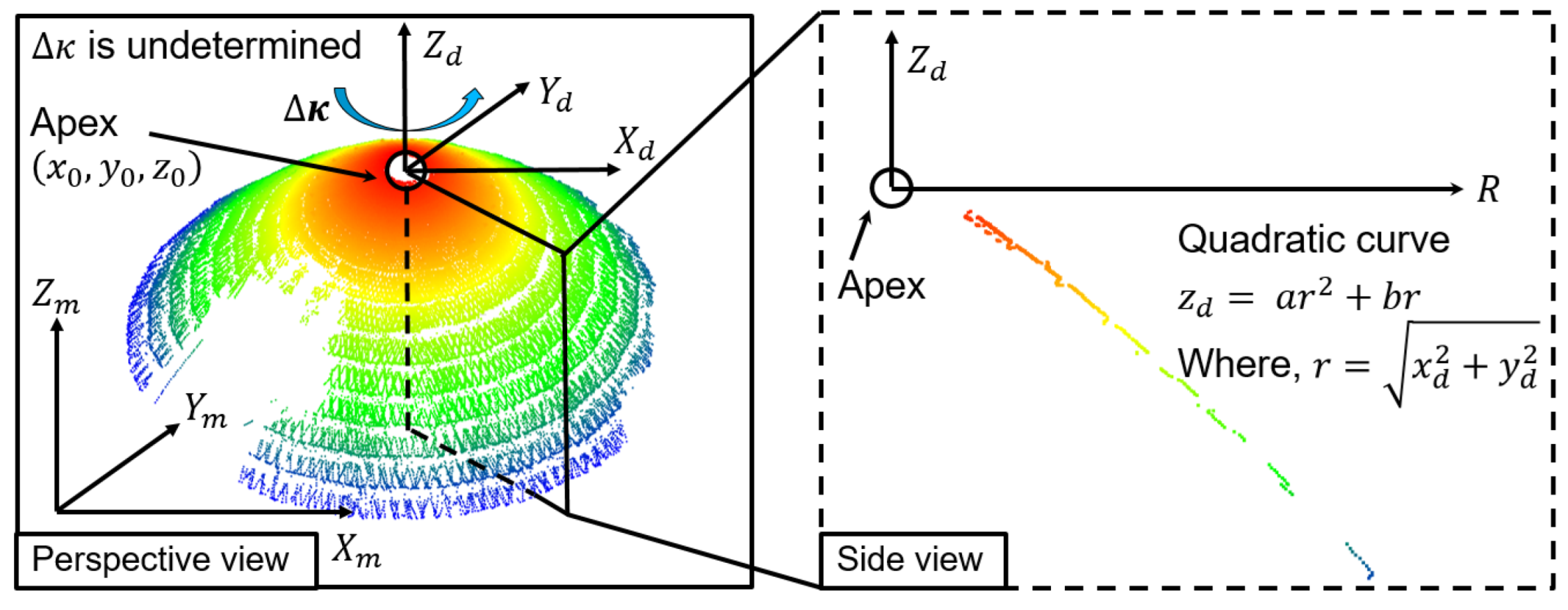
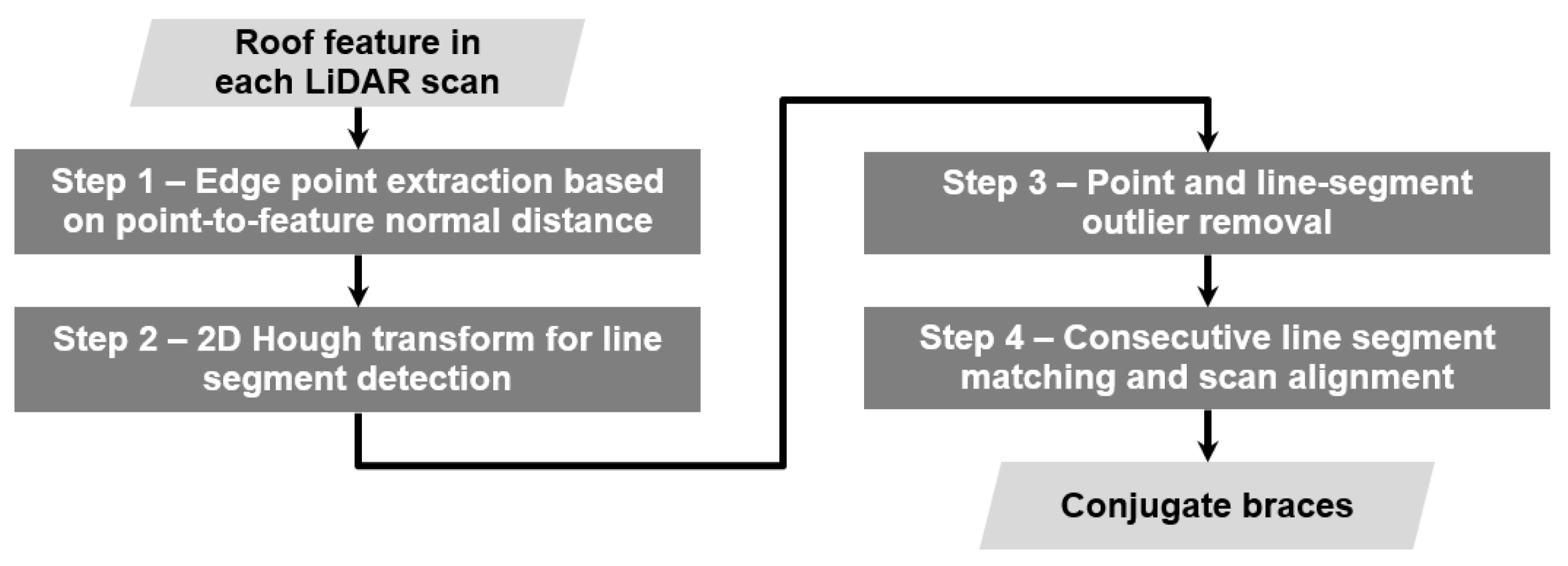
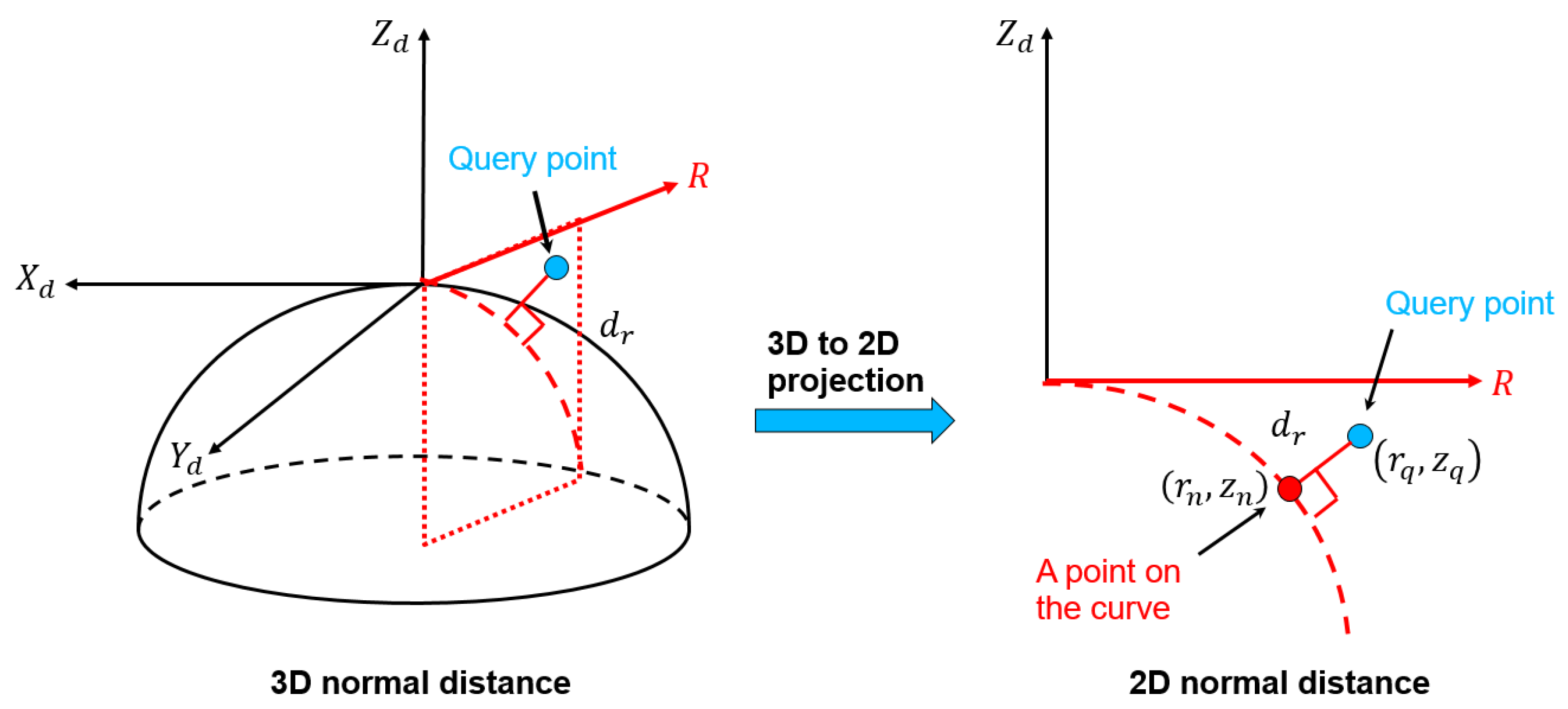

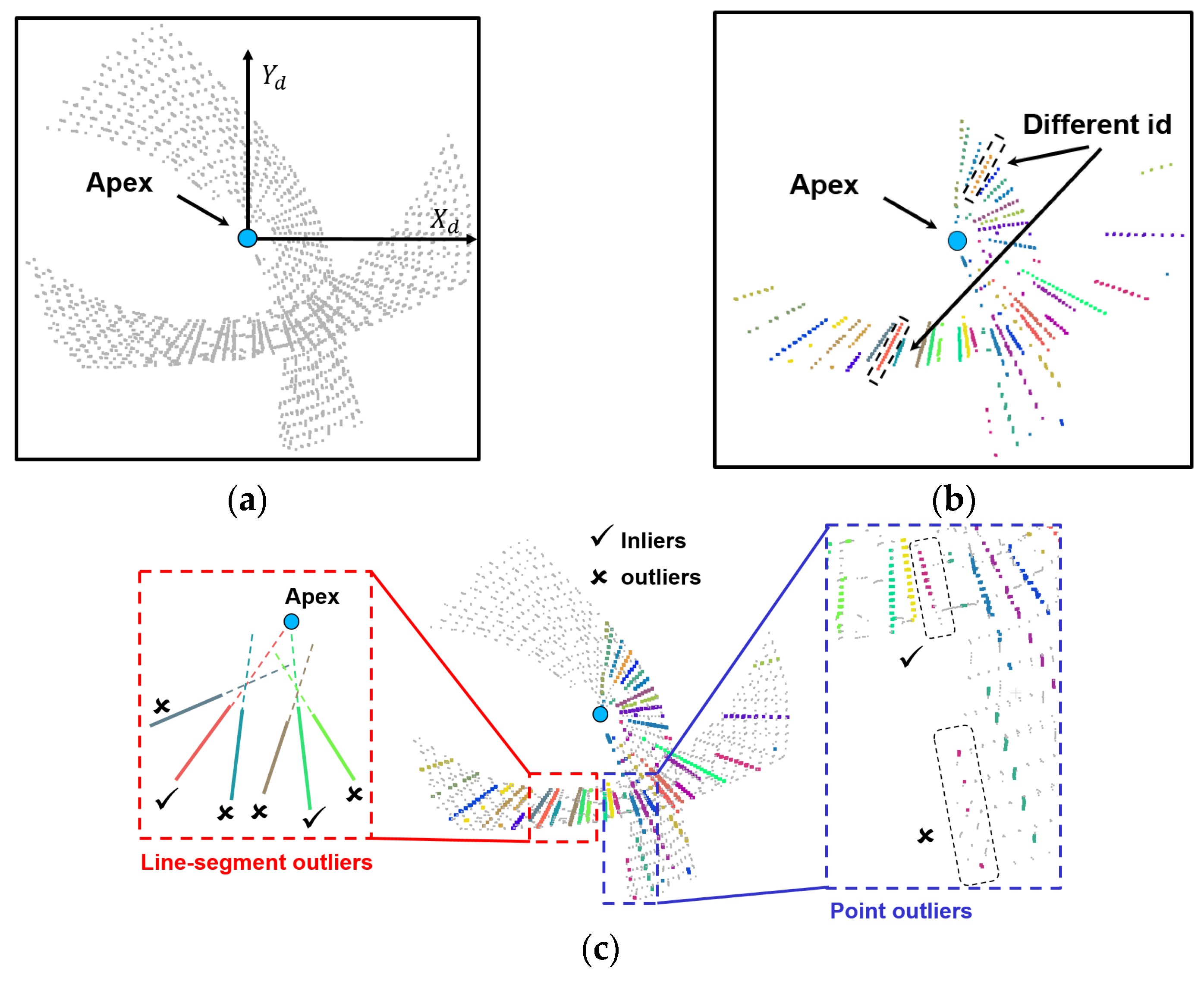

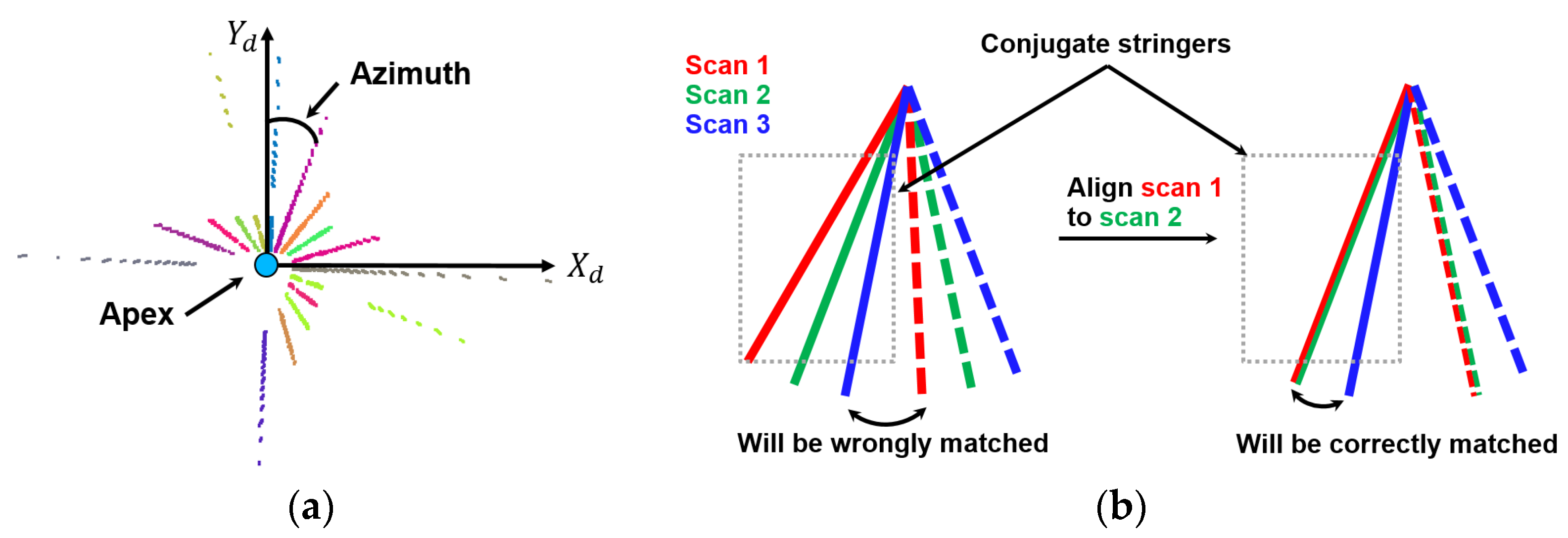
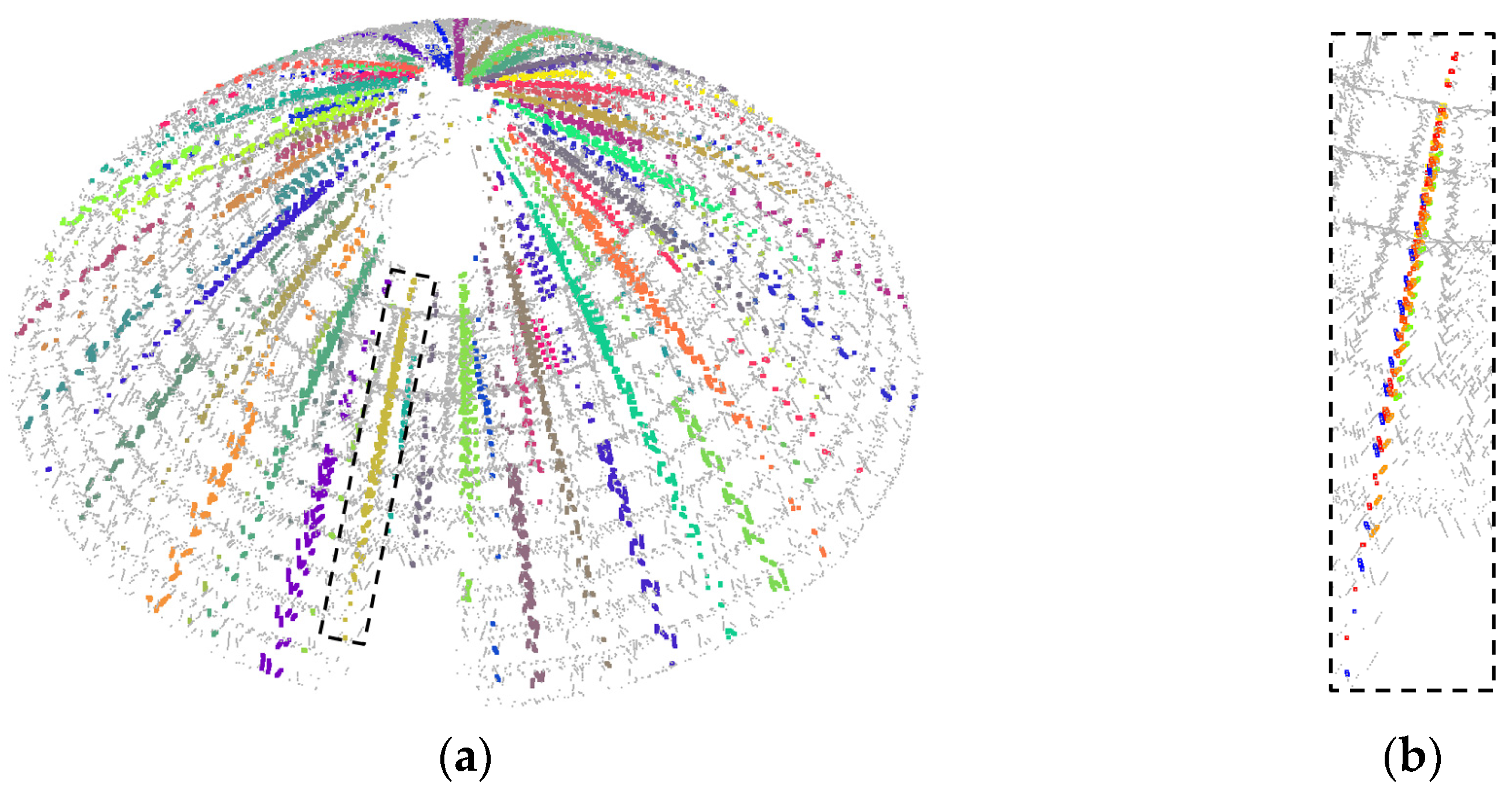
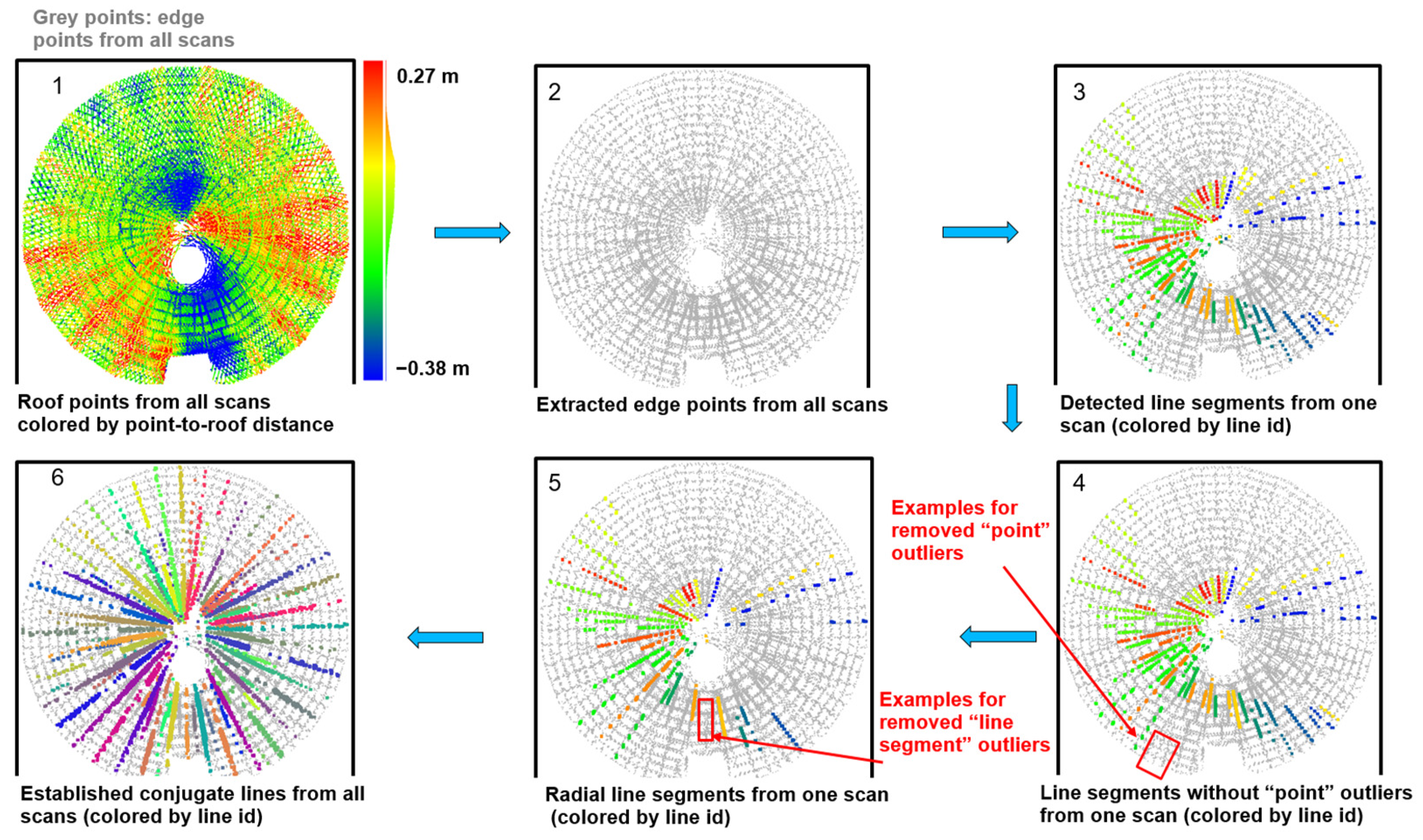
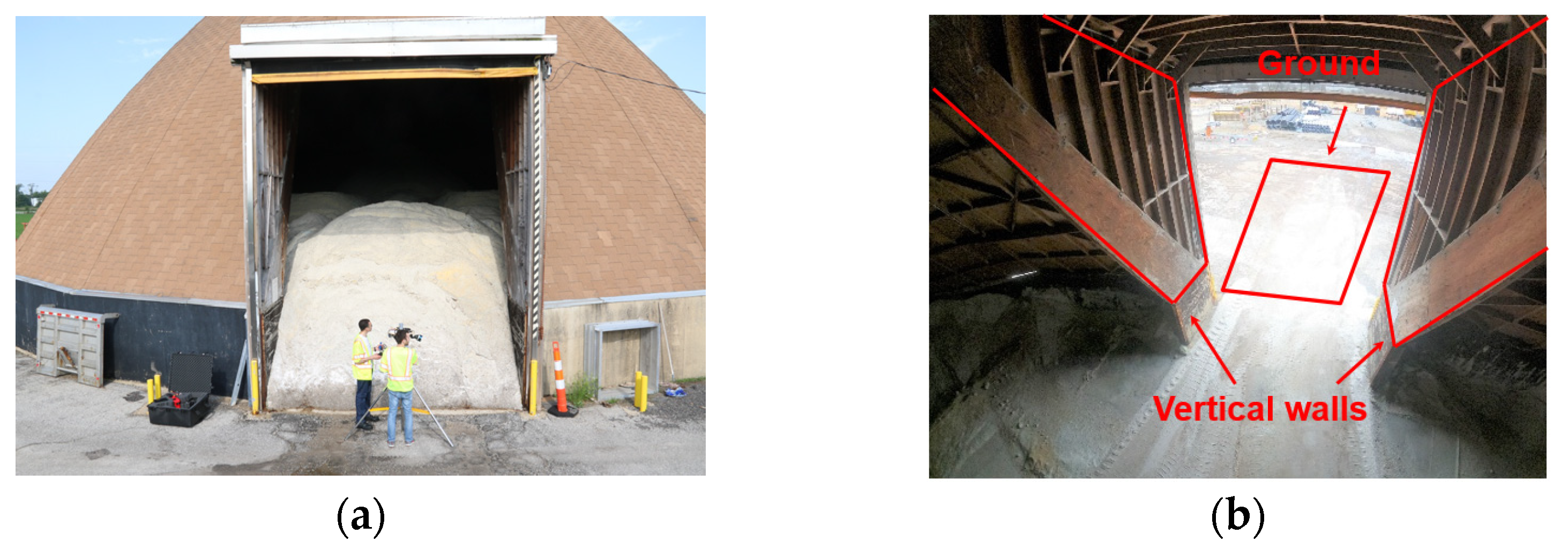

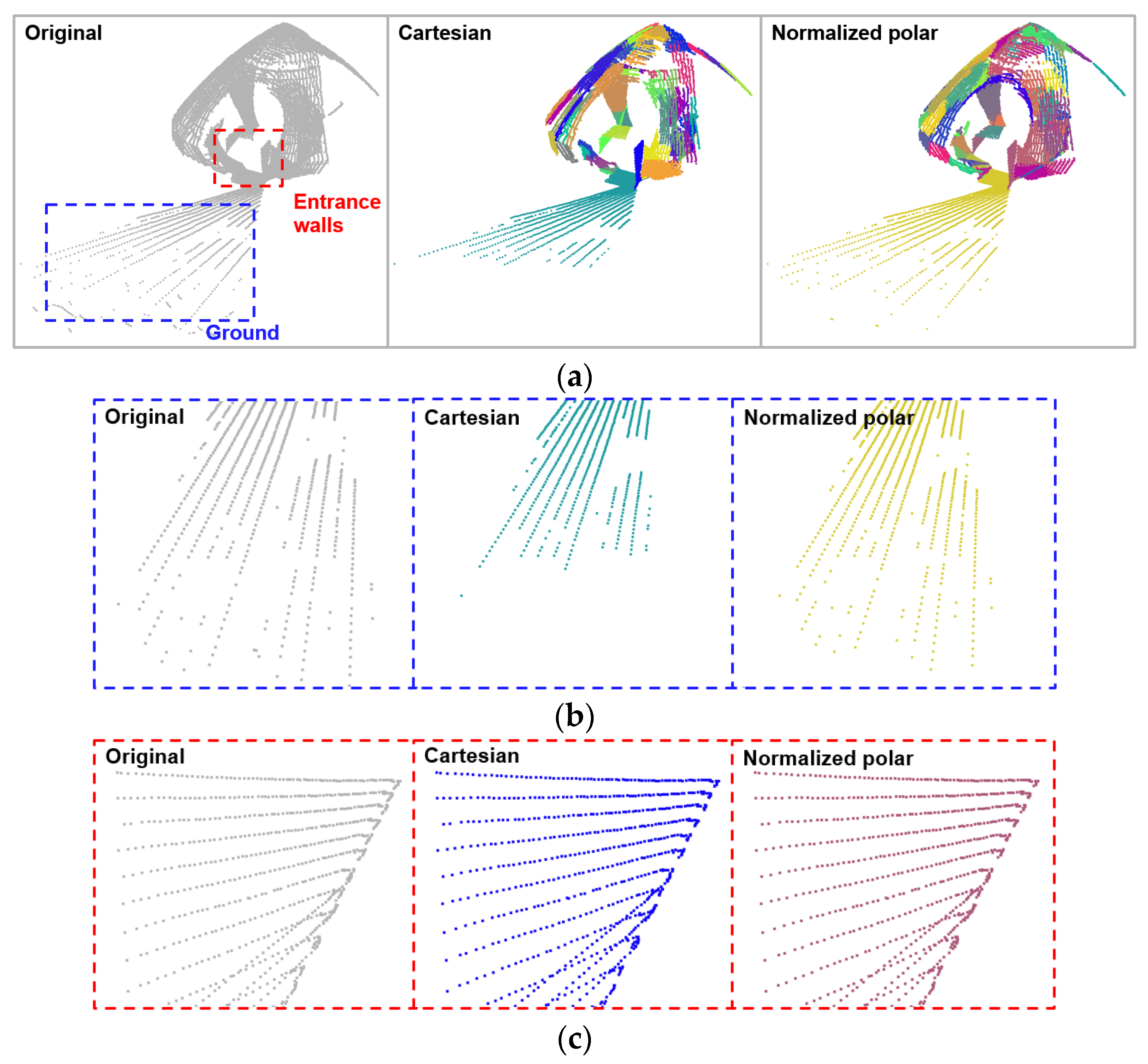
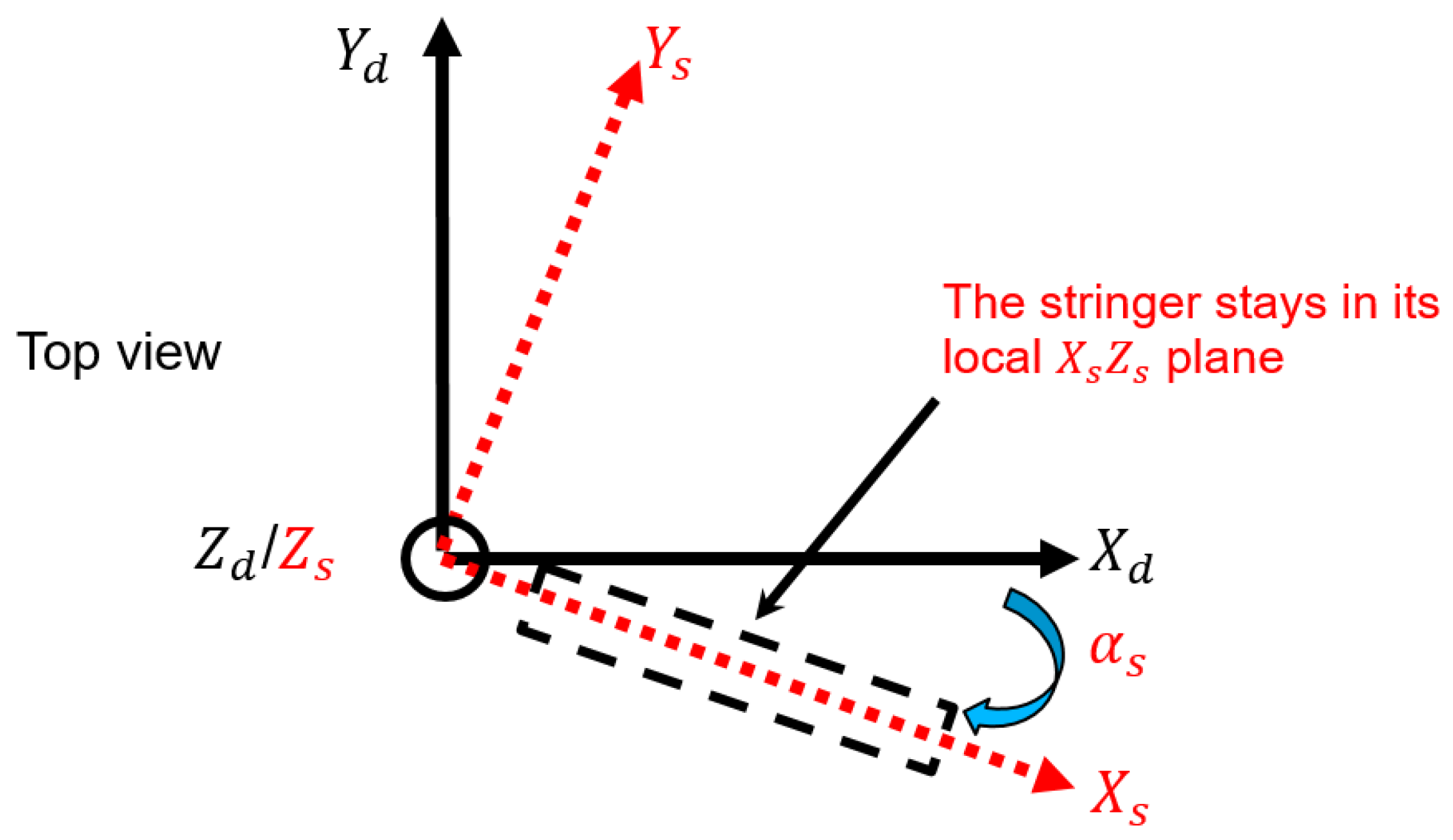



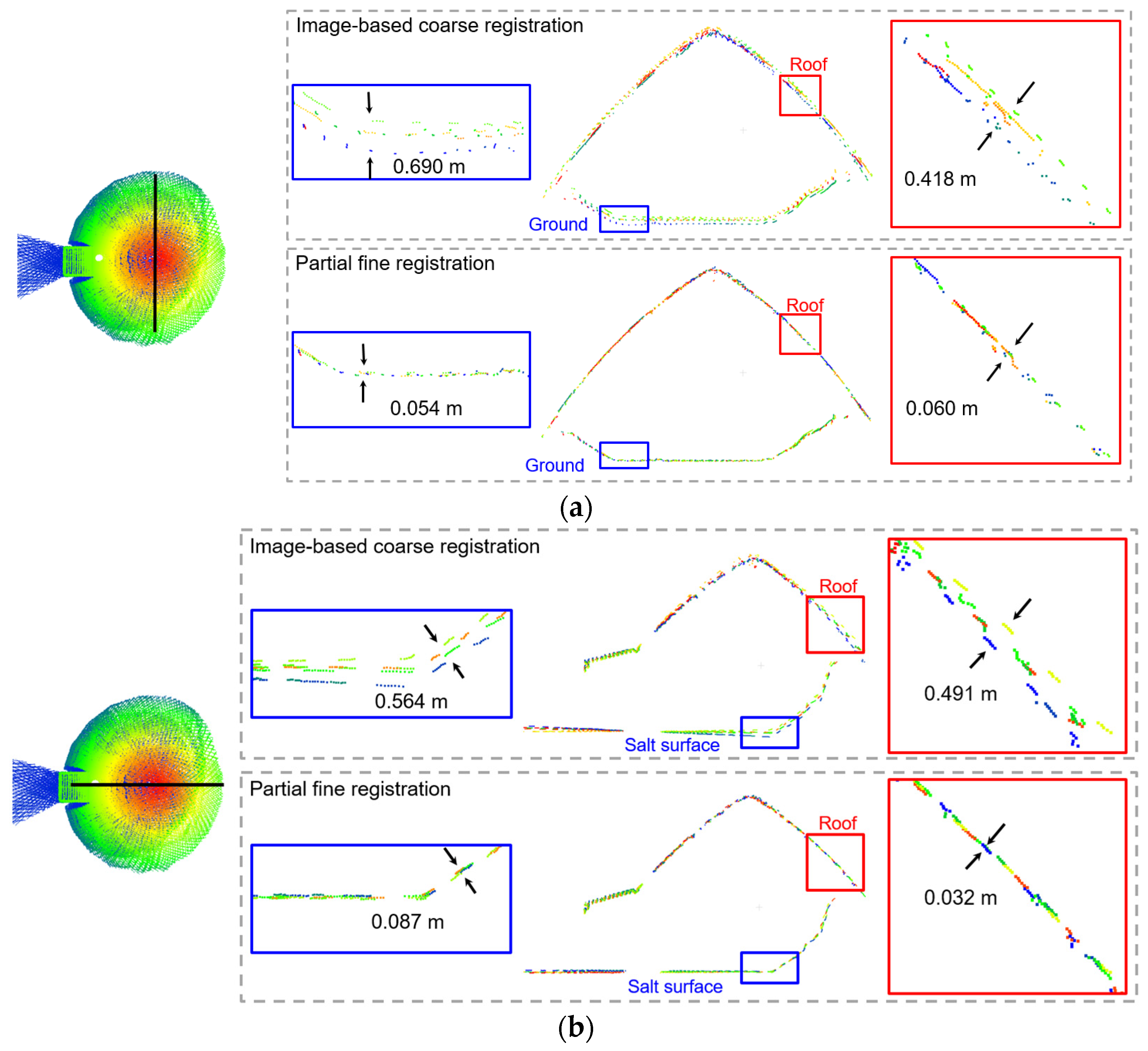


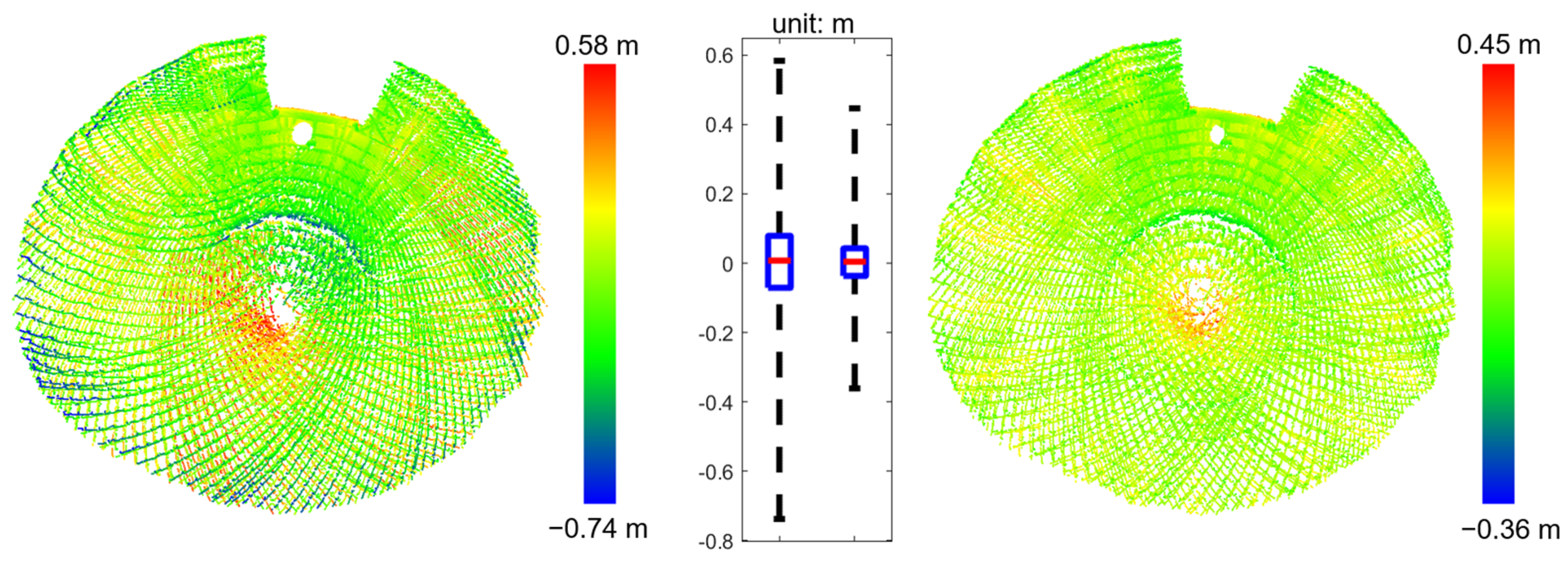
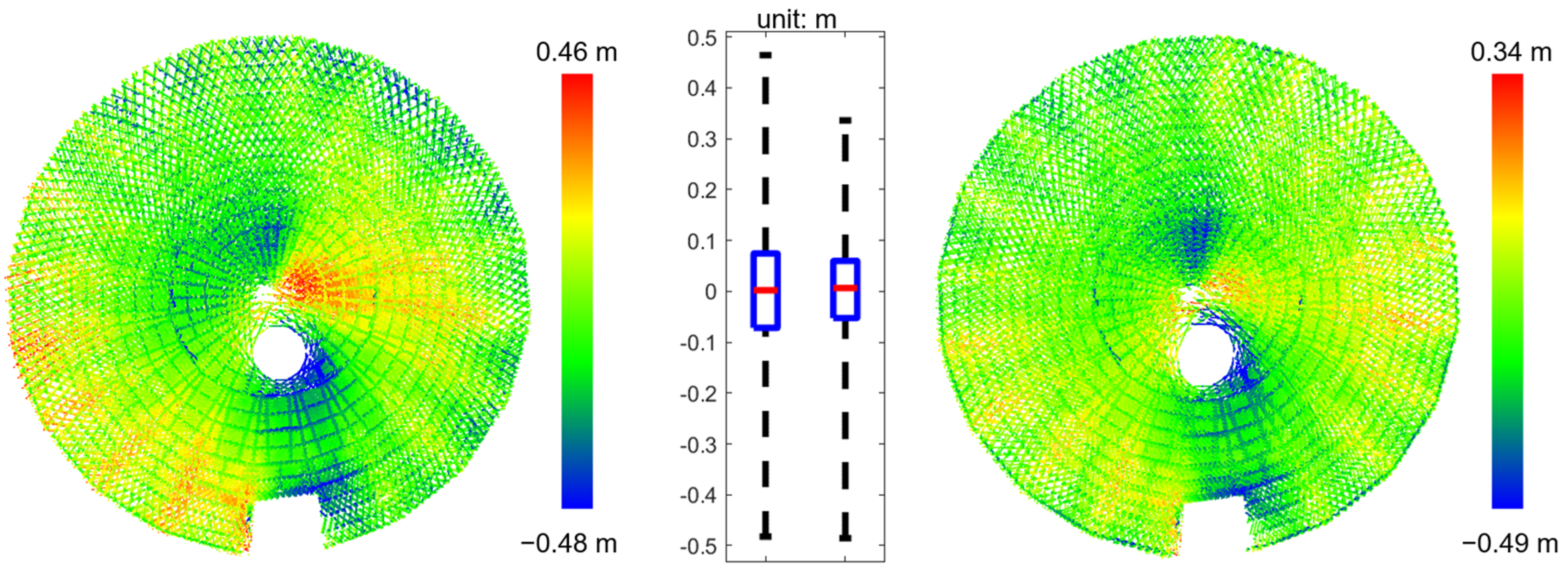

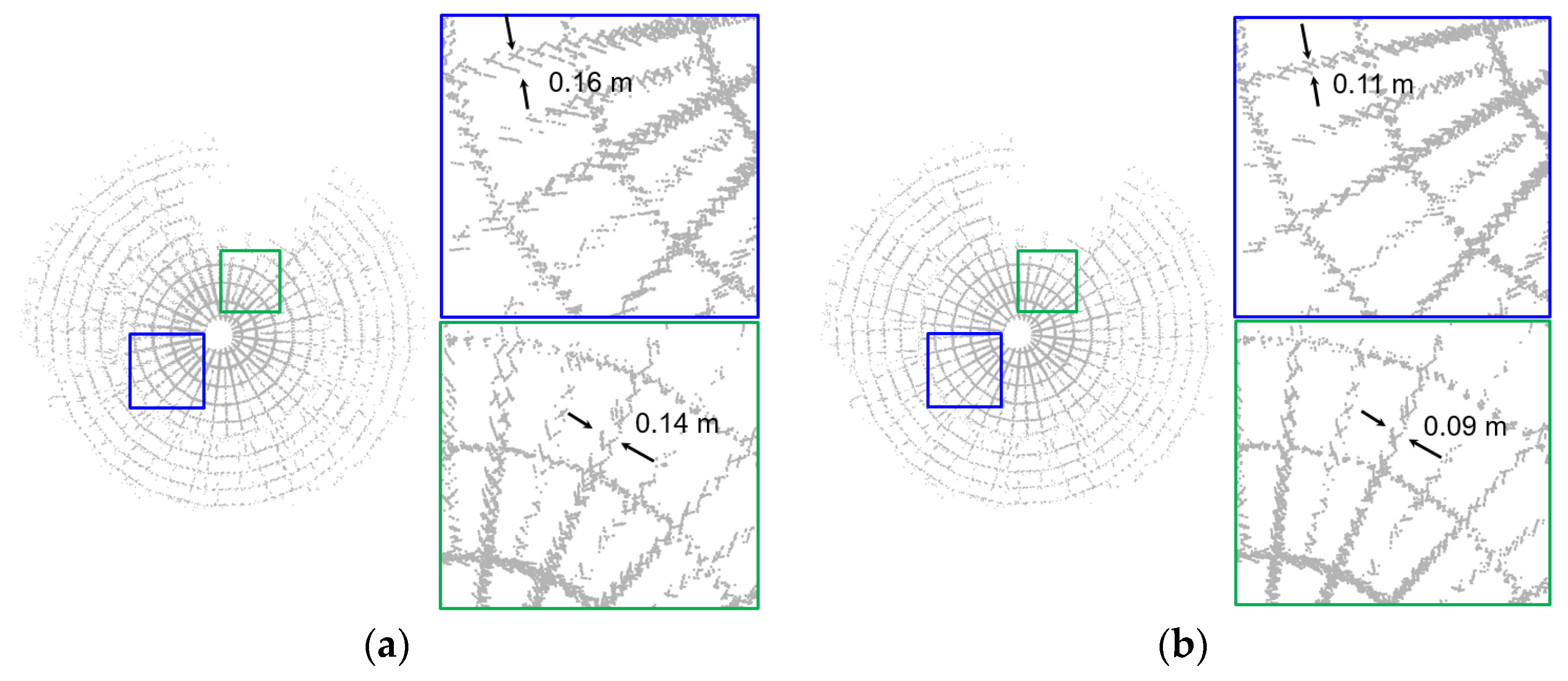
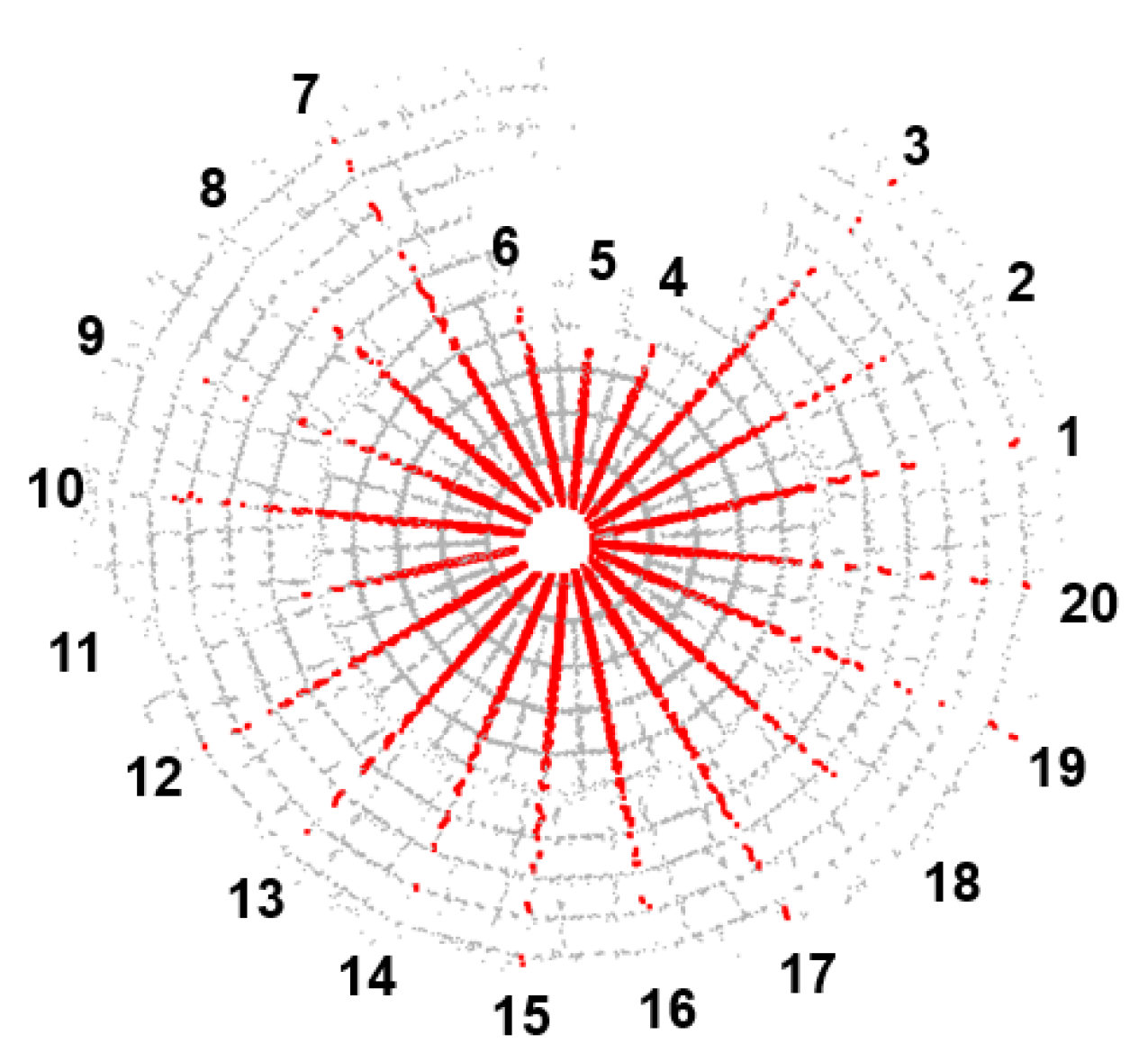
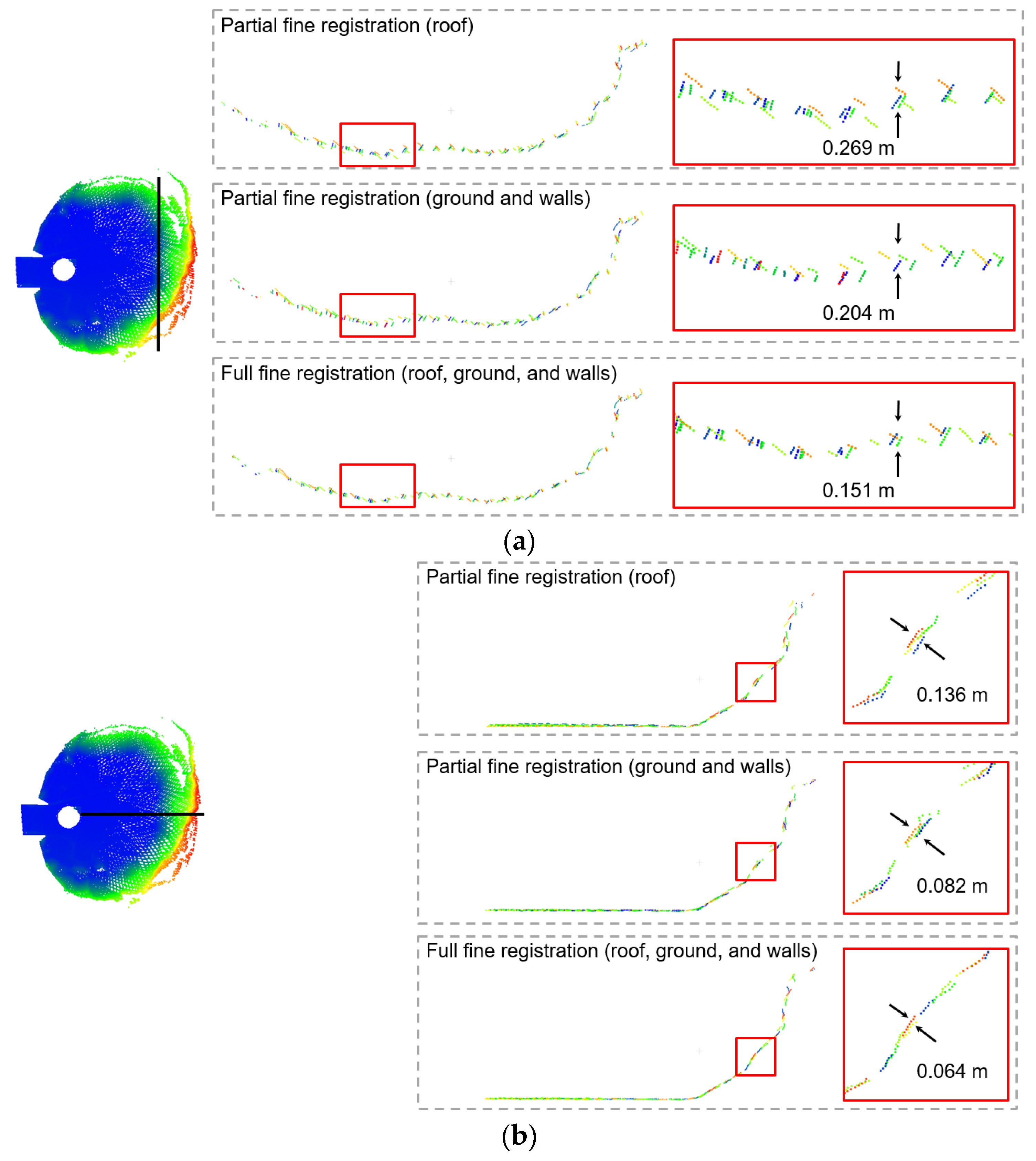




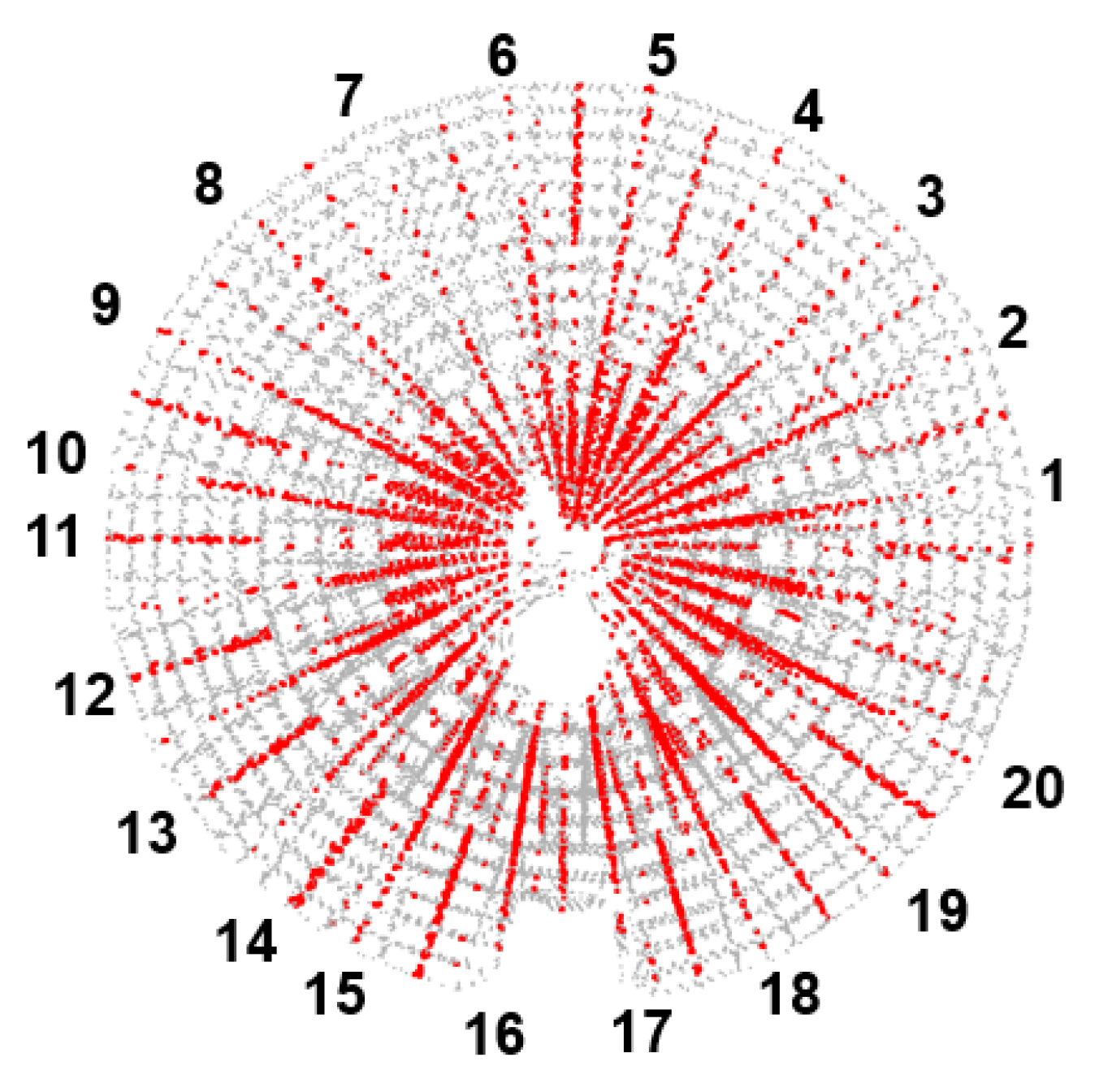
| Salt Dome Facility | Size (m) | Number of Scans | System Location | |
|---|---|---|---|---|
| Radius | Height | |||
| Lebanon unit | 10.0 | 11.0 | 9 | Inside the facility |
| Frankfort unit | 14.5 | 17 | 12 | By the entrance |
| West Lafayette unit | 13.5 | 15.5 | 13 | Inside the facility |
| Salt Dome Facility | Lebanon | Frankfort | West Lafayette | ||||
|---|---|---|---|---|---|---|---|
| SMART System Information | Mount | Location | Mount | Location | Mount | Location | |
| Roof | Center | Tripod | Entrance | Tripod | Center | ||
| Feature availability | Roof | Visible | Visible | Visible | |||
| Stringers | Visible | Not clearly visible | Visible | ||||
| Ground | Not visible | Visible | Visible in most scans | ||||
| Walls | Not visible | Visible | Visible in most scans | ||||
| Roof Quality of Fit (Utilized in LSA) | |||
| Dataset | Number of Points | RMS of Normal Distance (m) | |
| Coarse | Partial | ||
| Lebanon | 339,648 | 0.046 | 0.044 |
| Frankfort | 276,769 | 0.095 | 0.051 |
| West Lafayette | 415,896 | 0.085 | 0.067 |
| Ground Quality of Fit (not Utilized in LSA) | |||
| Dataset | Number of Points | RMS of Normal Distance (m) | |
| Coarse | Partial | ||
| Lebanon | - | - | - |
| Frankfort | 181,846 | 0.229 | 0.071 |
| West Lafayette | 115,867 | 0.154 | 0.053 |
| Roof Quality of Fit | |||
| Number of points | RMS of Normal Distance (m) | ||
| Partial | Full | ||
| 316,155 | 0.038 | 0.040 | |
| Stringer Quality of Fit | |||
| Stringer ID | Number of points | RMS of Normal Distance (m) | |
| Partial | Full | ||
| 1 | 1505 | 0.117 | 0.105 |
| 2 | 1440 | 0.121 | 0.109 |
| 3 | 1286 | 0.122 | 0.110 |
| 4 | 1123 | 0.129 | 0.112 |
| 5 | 1096 | 0.130 | 0.114 |
| 6 | 1075 | 0.146 | 0.109 |
| 7 | 1030 | 0.113 | 0.081 |
| 8 | 867 | 0.098 | 0.070 |
| 9 | 682 | 0.093 | 0.069 |
| 10 | 852 | 0.115 | 0.089 |
| 11 | 487 | 0.124 | 0.112 |
| 12 | 1485 | 0.134 | 0.124 |
| 13 | 1464 | 0.121 | 0.113 |
| 14 | 1346 | 0.111 | 0.102 |
| 15 | 1478 | 0.106 | 0.098 |
| 16 | 1536 | 0.102 | 0.093 |
| 17 | 1322 | 0.092 | 0.082 |
| 18 | 1194 | 0.090 | 0.081 |
| 19 | 995 | 0.096 | 0.085 |
| 20 | 1245 | 0.108 | 0.096 |
| Roof Quality of Fit | ||||||||
| Number of Points | RMS of Normal Distance (m) | |||||||
| Partial 1 | Partial 2 | Full | ||||||
| 276,769 | 0.051 | 0.086 | 0.052 | |||||
| Ground Quality of Fit | ||||||||
| Number of Points | RMS of Normal Distance (m) | |||||||
| Partial 1 | Partial 2 | Full | ||||||
| 181,846 | 0.071 | 0.033 | 0.033 | |||||
| Vertical Walls Quality of Fit | ||||||||
| Left | Right | |||||||
| Number of Points | RMS of Normal Distance (m) | Number of Points | RMS of Normal Distance (m) | |||||
| Partial 1 | Partial 2 | Full | Partial 1 | Partial 2 | Full | |||
| 34,951 | 0.190 | 0.046 | 0.047 | 26,688 | 0.220 | 0.047 | 0.048 | |
| Roof Quality of Fit | |||||||
| Number of Points | RMS of Normal Distance (m) | ||||||
| Partial | Full 1 | Full 2 | |||||
| 403,158 | 0.066 | 0.067 | 0.072 | ||||
| Stringer Quality of Fit | |||||||
| StringerID | Number of Points | RMS of Normal Distance (m) | |||||
| Partial | Full 1 | Full 2 | |||||
| 1 | 314 | 0.145 | 0.094 | 0.100 | |||
| 2 | 350 | 0.148 | 0.103 | 0.117 | |||
| 3 | 302 | 0.165 | 0.133 | 0.143 | |||
| 4 | 288 | 0.188 | 0.143 | 0.156 | |||
| 5 | 323 | 0.209 | 0.188 | 0.191 | |||
| 6 | 212 | 0.208 | 0.195 | 0.210 | |||
| 7 | 80 | 0.124 | 0.115 | 0.118 | |||
| 8 | 189 | 0.094 | 0.089 | 0.069 | |||
| 9 | 350 | 0.122 | 0.075 | 0.055 | |||
| 10 | 248 | 0.108 | 0.091 | 0.062 | |||
| 11 | 204 | 0.108 | 0.079 | 0.062 | |||
| 12 | 254 | 0.149 | 0.082 | 0.079 | |||
| 13 | 324 | 0.139 | 0.096 | 0.094 | |||
| 14 | 303 | 0.202 | 0.156 | 0.135 | |||
| 15 | 611 | 0.202 | 0.182 | 0.195 | |||
| 16 | 615 | 0.190 | 0.182 | 0.185 | |||
| 17 | 526 | 0.144 | 0.105 | 0.116 | |||
| 18 | 471 | 0.078 | 0.057 | 0.070 | |||
| 19 | 644 | 0.084 | 0.053 | 0.065 | |||
| 20 | 524 | 0.128 | 0.073 | 0.077 | |||
| Ground Quality of Fit | |||||||
| Number of Points | RMS of Normal Distance (m) | ||||||
| Partial | Full 1 | Full 2 | |||||
| 115,867 | 0.053 | 0.050 | 0.029 | ||||
| Vertical Walls Quality of Fit | |||||||
| Left | Right | ||||||
| Number of Points | RMS of Normal Distance (m) | Number of Points | RMS of Normal Distance (m) | ||||
| Partial | Full 1 | Full 2 | Partial | Full 1 | Full 2 | ||
| - | - | - | - | 915 | 0.126 | 0.031 | 0.013 |
Disclaimer/Publisher’s Note: The statements, opinions and data contained in all publications are solely those of the individual author(s) and contributor(s) and not of MDPI and/or the editor(s). MDPI and/or the editor(s) disclaim responsibility for any injury to people or property resulting from any ideas, methods, instructions or products referred to in the content. |
© 2023 by the authors. Licensee MDPI, Basel, Switzerland. This article is an open access article distributed under the terms and conditions of the Creative Commons Attribution (CC BY) license (https://creativecommons.org/licenses/by/4.0/).
Share and Cite
Liu, J.; Hasheminasab, S.M.; Zhou, T.; Manish, R.; Habib, A. An Image-Aided Sparse Point Cloud Registration Strategy for Managing Stockpiles in Dome Storage Facilities. Remote Sens. 2023, 15, 504. https://doi.org/10.3390/rs15020504
Liu J, Hasheminasab SM, Zhou T, Manish R, Habib A. An Image-Aided Sparse Point Cloud Registration Strategy for Managing Stockpiles in Dome Storage Facilities. Remote Sensing. 2023; 15(2):504. https://doi.org/10.3390/rs15020504
Chicago/Turabian StyleLiu, Jidong, Seyyed Meghdad Hasheminasab, Tian Zhou, Raja Manish, and Ayman Habib. 2023. "An Image-Aided Sparse Point Cloud Registration Strategy for Managing Stockpiles in Dome Storage Facilities" Remote Sensing 15, no. 2: 504. https://doi.org/10.3390/rs15020504
APA StyleLiu, J., Hasheminasab, S. M., Zhou, T., Manish, R., & Habib, A. (2023). An Image-Aided Sparse Point Cloud Registration Strategy for Managing Stockpiles in Dome Storage Facilities. Remote Sensing, 15(2), 504. https://doi.org/10.3390/rs15020504







